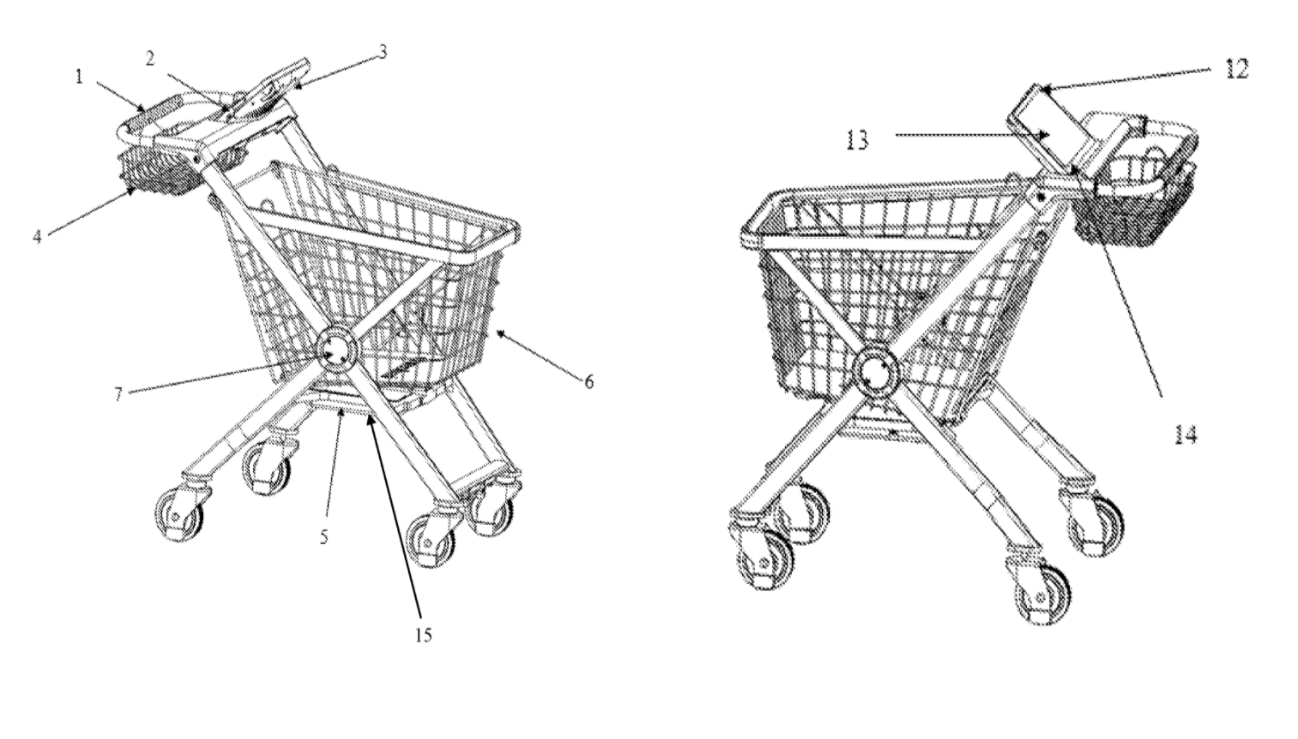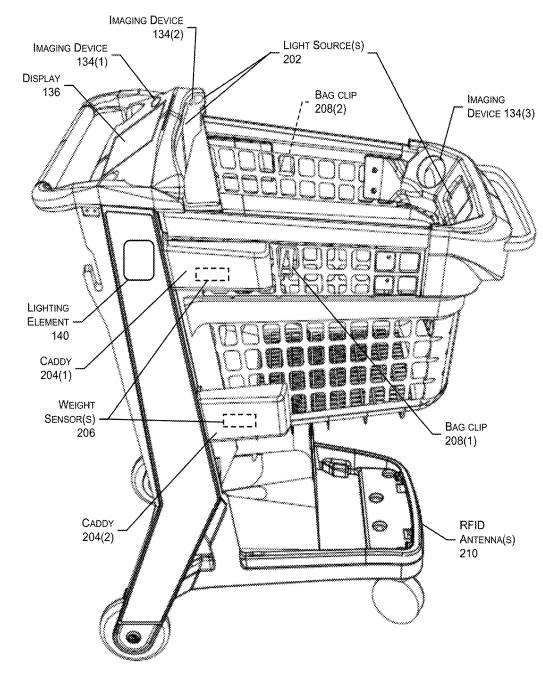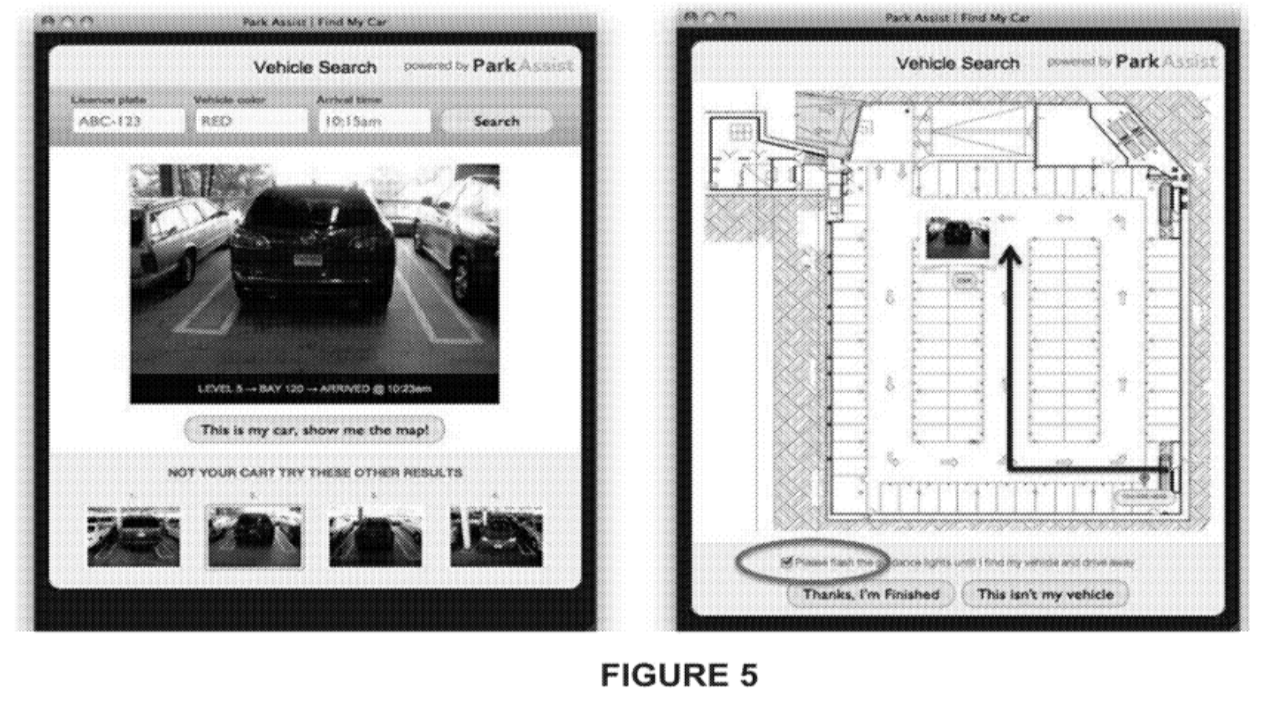Artificial Intelligence (AI) is a continual work in progress by its nature; the more information available, the more accurately it functions. AI is applicable across a wide variety, if not every, industry. There is so much to look forward to in the future of AI, but in this article, we are going to look specifically at patents containing AI that may soon play a role in our everyday lives.
At Work (At Home)
The COVID-19 pandemic has familiarized us with virtual meetings. Well, Microsoft is aiming to contribute to this trending form of communication with patent US2022030042A1. The intelligence behind this patent is a “decision engine” that determines which participant’s video feed to display and whose screen to display it on. This decision is based on data such as messages sent within the chat, audio, eye and gesture signals, and user roles (such as being the host of a meeting or professor of a class). Figure 6 below is an example of the default user interface of a video meeting. Figure 7A is the interface for user JD, after mentioning a participant such as GM via the chat. In the same fashion shown in 7A, JD would also be promoted on GM’s screen as a result of the mention. If the engine decided the message sent to GM was private, this promoted display is limited to the two users. However, if it is decided that the message is public, that would result in the promotion of GM’s display on the interface of all relevant participants. This selective display encourages interaction by bringing attention to the participants that are the subject of discussion. Luckily, the engine would also be capable of deciding when a user does not want to be displayed.

The thumbnail/video of GM is promoted on user JD’s screen after being mentioned
Shopping (Also At Home)
Another common at-home activity that may be easier in the near future is online shopping. Specifically, the process of shopping that involves narrowing down the search results to your desired aspects of the product. This may seem like an easy solution by simply using the filters provided on most websites, but patent EP3961543A1 claims novelty in improving upon the typical standardized filter by using a computer-based processor to personalize filters to your search. It would work like this: type “shoes” into a search bar on a website, multiple filters are then ordered based on their association to “shoes,” an individual filter is presented to you, and based on your input the processor determines whether the next filter in the order is presented. Your input, along with other historical activity-related data on the website with other products, is then used to determine the products listed in the results. So, the filter works and adapts to you, versus the other way around.
In-Person Shopping
Patent US11004053B2 is an innovation that makes shopping outside of your home exciting. That is – a smart shopping cart. This shopping cart is described as loaded with technology like a weight sensor, a monitoring device, and a code-scanning device which all function to gather information on products placed in the cart. This information is compared to the pre-stored information of the product and summarized on the handle display. The cart also contains a positioning device that receives signals from around the store, allowing you to receive directions to the location of any product in the store on your display. Finally, you no longer have to worry about standing in line since you can pay for the products in your cart with the device on the handle. Sounds like an expensive cart, but it may be worth the investment because, with the assistance of some complimentary tech in the store, it can also prevent theft. This is accomplished by the cart taking measurements of the products and the shopper (either by sensors in the store or confirmation of the user’s weight through scanning an app) prior to entering the market, and any discrepancy can set off an alarm.

First image: 1 – handle, 2 – charging port, 3 – an intelligent terminal device, 4 – storage unit, 5 – weight sensor (sends collected weight information to 3), 6 – shopping device, 7 – stores information on the cart, 15 – battery; second image: 12 – positioning device, 13- touchscreen computer, 14 – payment device
The cart described above functions similarly to the one pictured below and is used in the Amazon Fresh grocery stores. So, if you live near one of the select areas where Amazon Fresh has opened up, you can check out a version of this cart as soon as today.

Image is taken from US10953906B1 owned by Amazon Tech Inc.
Parking Your Car
On your way to the city to grocery shop with your intelligent cart, park stress-free with US11232301B2. This patent is largely based on the use of cameras for monitoring and taking pictures of cars and each parking space. One way these images are used is to determine whether a parking space is vacant or occupied. This can be concluded by a human or an image processing software involving an algorithm that improves based on a human correction. Further, having the availability visually documented enables the customer to choose their desired parking spot beforehand, and allows for the lot owner to vary the price based on spot location. Don’t worry about remembering where you parked – the camera images also serve the algorithm in identifying cars by their make, model, color, or license plate number. These images are compared with those associated with the occupancy status to identify and locate the car, and even provide directions for a lost customer via a kiosk. Other benefits to the parking lot monitoring are occupancy-dependent illumination and ventilation, which saves on electricity.

Demonstration of what would be shown if a customer input an identifier (license plate number) and received the location of their car, along with directions.
AI is Vast and Infinite
Here we’ve introduced a few ways AI has the potential to affect our everyday lives. But, recent breakthroughs in AI extend beyond this. From relieving doctors of time by diagnosing medical conditions to increasing the accuracy of historic knowledge by restoring ancient documents, it has the potential to shape every aspect of our lives. The only hope is that as AI gets more intertwined with nature (the goal of Elon Musk’s Neuralink), it will continue to be used for the better.




